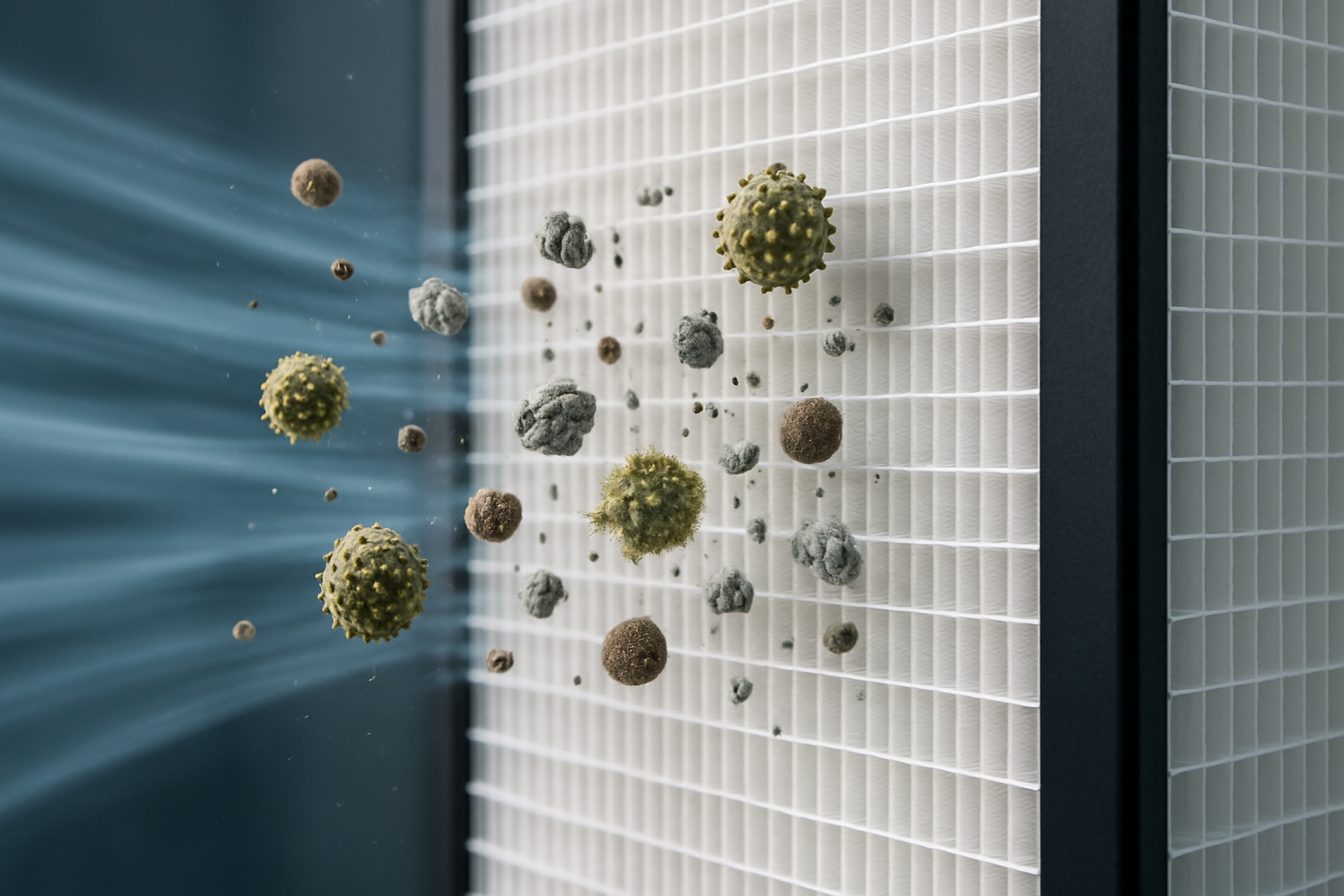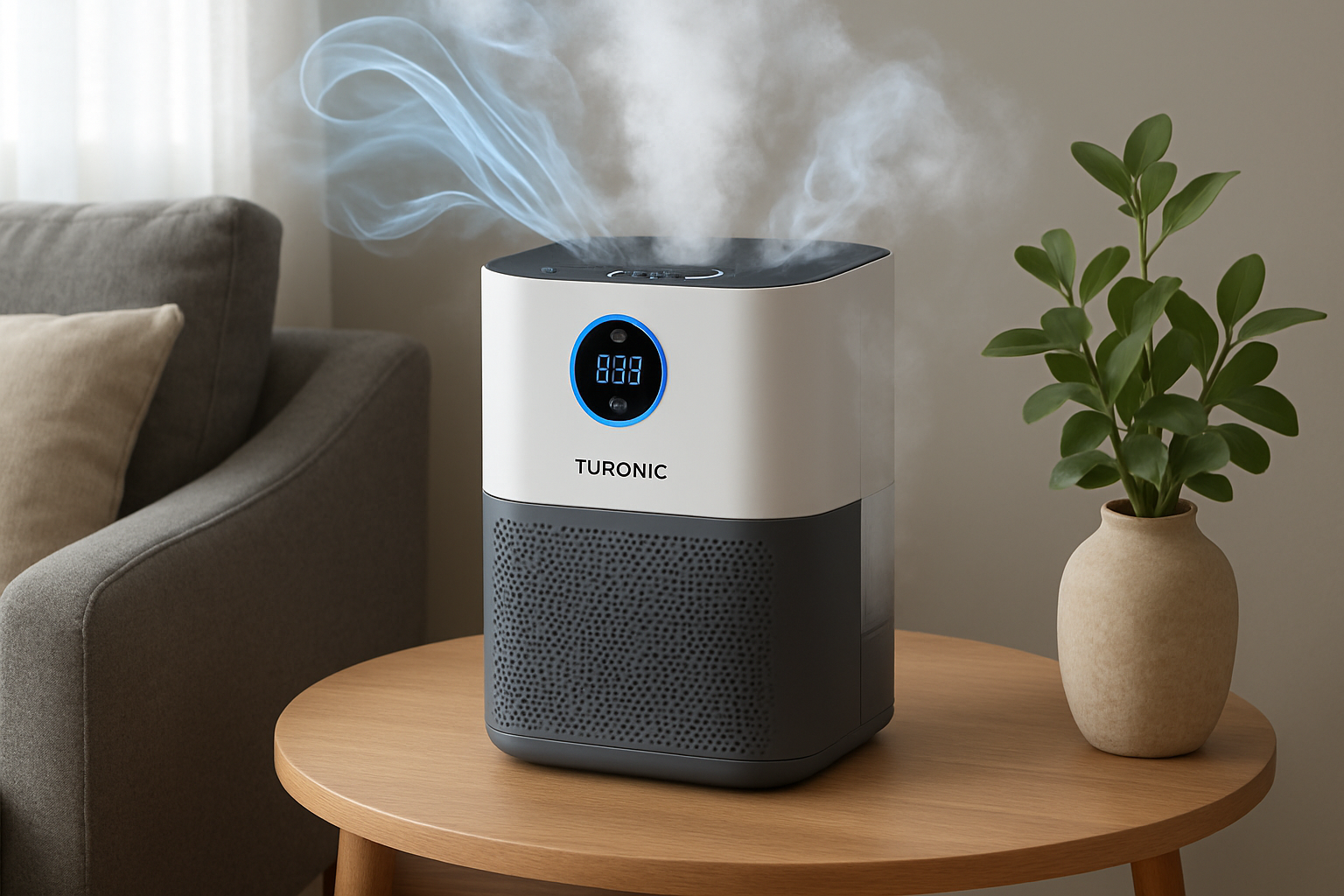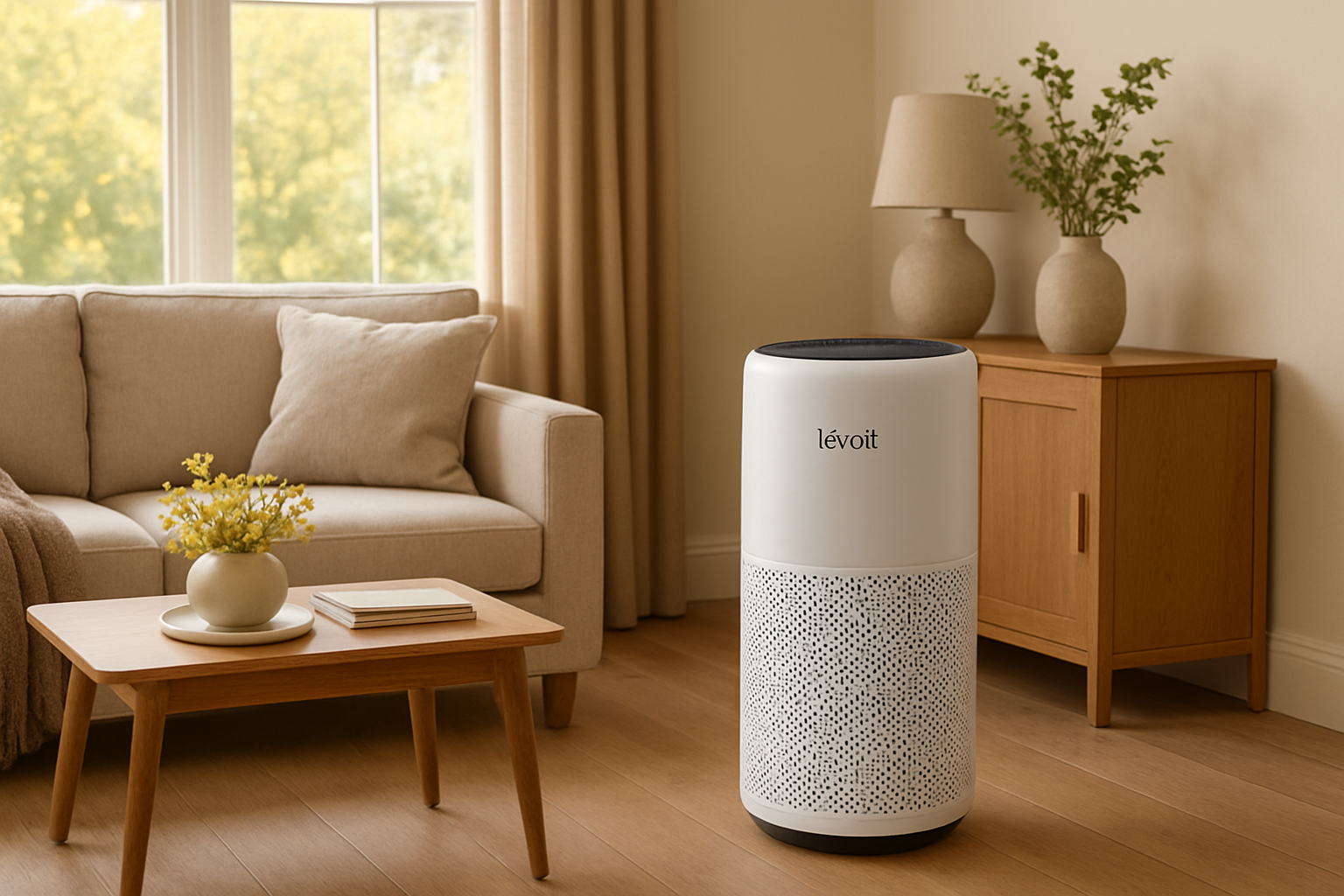Free UK shipping
How to Find the Best Air Purifier for Allergies in UK: Expert Tips and Top Picks
August 25, 2025 7 min read

```html
It’s no secret that allergies affect millions across the UK every year.
But what exactly makes a great air purifier for allergy sufferers?
Here’s your complete cheatsheet to choosing the best air purifier for allergies (UK edition).
Some are tiny powerhouses designed for bedrooms.
Some come with smart sensors that track air quality in real time.
Some quietly run through the night, filtering pet dander and pollen.
Some double up as humidifiers to ease dry air symptoms.
Let’s dive right in.
What Is an Air Purifier and How Can It Help with Allergies?
Imagine a silent guardian in your home, removing the invisible particles that trigger your sneezes and sniffles. That’s exactly what an air purifier does. It traps airborne allergens like pollen, dust mites, pet dander, and mold spores, preventing them from circulating in your living space.
For allergy sufferers in the UK, particularly during hay fever season, this can be transformative. According to Dr. John McKeon, CEO of Allergy Standards, a model equipped with a High Efficiency Particulate Air (HEPA) filter can capture up to 99.97% of particles as small as 0.3 microns, including pollen and mold spores (source). That means less exposure to triggers and potentially fewer symptoms.
Yet, not all air purifiers are created equal. Selecting the right appliance depends on your specific allergens, room size, and lifestyle. For instance, if you share your home with pets, a purifier with a dedicated pet mode and activated carbon filters can reduce dander and offensive smells.

Why Should You Invest in an Air Purifier for Allergies?
Understanding the benefits can help convince even skeptics. Allergies don’t just cause discomfort; they can impact sleep quality, mental sharpness, and overall well-being. Indoor air pollution can be up to five times worse than outdoor air, laden with invisible irritants.
Several studies support that air purifiers reduce these sneaky indoor allergens. A 2020 clinical trial found that dust mite allergy patients required fewer medications after six weeks of HEPA air purifier use (source). Moreover, by capturing microscopic particles, these devices reduce airway inflammation and improve respiratory health, especially important for asthma sufferers.
Still, an air purifier is a piece of the puzzle—not a magic cure. Regular cleaning of your home, vacuuming with HEPA vacuums, and managing humidity are vital complementary steps. Pairing an air purifier with a dehumidifier can be particularly effective for mold allergies.
How Do I Choose the Best Air Purifier for Allergies in the UK?
Choosing the perfect air purifier might feel overwhelming with so many options on the market. Fear not. Here are expert tips to narrow down your choice:
- Look for a True HEPA Filter: Not all HEPA filters are made equal. True HEPA filters capture 99.97% of particles 0.3 microns and larger. Beware of vague marketing terms like “HEPA-type” or “HEPA-like.”
- Consider Your Room Size: Check the Clean Air Delivery Rate (CADR), which measures how quickly air is purified. For serious allergy relief, experts recommend at least six air changes per hour (ACH) to clear the air every 10 minutes (source).
- Noise Levels Matter: An air purifier that sounds like a 747 won’t be popular at bedtime. Aim for models operating under 45 dB for quiet night use.
- Extra Features: Smart connectivity, air quality sensors, and auto modes can make managing your device easier and more efficient.
- Maintenance & Filter Costs: Replacement filters can be a long-term expense. Choose units with affordable, easy-to-replace filters to avoid future surprises.
Where Should I Place My Air Purifier?
Hint: Placement is everything. Bedrooms are prime spots since we spend hours there, and clean air can improve sleep quality. However, if you battle pet allergies or pollen, placing purifiers in living rooms or near entryways can reduce exposure to allergens tracked indoors (source). Avoid placing your purifier in cramped spaces or behind furniture as this limits airflow and effectiveness.
Top Air Purifiers for Allergies UK 2025
After testing numerous brands and models, here are the stand-out picks—starting with our #1 recommendation for allergy relief and overall home wellness.
Healthy Air HA500 – Editor’s Top Pick (Hospital-grade tech, smart & portable)
Best for uncompromising allergy relief and whole-home wellness.
- Why it’s our top choice: The HA500 is backed by hospital-grade technology designed to eliminate harmful particles and allergens, while also tackling VOCs and airborne viruses. It adapts automatically to your environment, adjusting performance in real time so you always breathe optimally purified air.
- Smart, effortless operation: Intelligent sensing and auto modes remove the guesswork—ideal for bedrooms, living rooms, and open-plan spaces.
- Quiet power + portability: A sleek, portable design makes it easy to move from room to room without disrupting sleep or conversation.
- Well-reviewed & stocked: Loved by customers (30 reviews) and part of our Reverie Luxe stocked collection, it ships directly from us for a smooth purchase experience.
Good to know: It’s a premium investment (listed at $1,323; financing available via Sezzle). Join our VIP Membership to unlock 15% off instantly.
Levoit Core 600S – Best Alternative for Large Rooms
This model combines powerful True HEPA H13 filtration and an activated carbon filter to trap 99.9% of particles smaller than 0.3 microns. It operates quietly (below 55 dB) and comes with smart controls via an intuitive app. A strong value choice in the UK market, blending performance with easy-to-use features (source).
Drawbacks: it’s bulky and the design is fairly understated.
GermGuardian AC4825E – Best Budget Option
If you want to spend less without giving up quality, the GermGuardian offers a HEPA filter with UV-C sanitation to tackle airborne germs and allergens. It is compact and whisper-quiet, perfect for bedrooms or small living spaces. Although it lacks smart features, it does a commendable job filtering dust, pollen, and pet dander at a fraction of the cost of premium models (source).
RabbitAir A3 – Best for Stylish Design and Pet Owners
The RabbitAir A3 stands out thanks to its unique colour options and can even be wall-mounted. It features customizable filters, including a pet allergy option, ideal for those wanting a blend of aesthetics and efficiency. It’s whisper-quiet and Energy Star certified but comes with a higher price tag and more expensive filter replacements (source).
Dyson Purifier Cool PC1 – Best Multi-functional Purifier with Fan
This sleek device doubles as a cooling fan and offers excellent air-cleaning performance with smart app and voice control. It efficiently removes microscopic allergens and operates quietly at low fan speeds. The main downside is the premium price and a lightweight, mostly plastic design (source).
Turonic PH950 2-in-1 – Best Purifier with Humidifier
A powerful, feature-rich option that combines purification and humidification, perfect for dry UK winters. It uses multiple filters and ionization to neutralise over 99.98% of particles but is bulky and has a steep filter replacement cost.

SwitchBot Air Purifier Table – Best for Cat Owners
Designed with pets in mind, this small, stylish purifier operates near-silently and serves multiple functions, including wireless phone charging and fragrance diffusion. It’s pricier but perfect for rooms up to medium size and pet-friendly homes.
What to Avoid When Buying Air Purifiers
Beware of units with built-in ionizers. They release charged ions to clump particles but can produce ozone, which irritates respiratory tracts and worsens allergy symptoms. Also, ionizers are less effective at removing large particles like pollen and dust.
Look for reputable certifications such as ASTHMA & Allergy Friendly marks or those tested and approved by independent bodies like the AAFA. Always check reviews, understand filter costs, and pick models suitable for your room size (source).
How to Maintain Your Air Purifier for Best Performance
Keeping your purifier in prime condition is essential. Change HEPA filters as per manufacturer guidelines—usually every 6 to 12 months. Some models offer reusable filters that require washing but still need eventual replacement.
Wipe the exterior regularly with a damp cloth. Avoid placing purifiers in dusty or humid spots without proper electrical protection. Using multiple smaller units across rooms rather than one big machine often yields better results (source).
How Do Air Purifiers Affect Pets and Children?
A common concern is whether air purifiers are safe for pets and children. Avoid models that emit ozone or use UV-C sanitizers without safeguards; these can be harmful. Choose purifiers with bite-resistant cords and paw-proof grilles for animal owners, such as the SwitchBot Air Purifier Table.
For children, clean air can reduce asthma triggers and improve sleep quality. Select quiet units to avoid disturbance at night and ensure the device is positioned securely out of reach to prevent accidents.
Can Air Purifiers Really Help with Allergies?
While air purifiers are not a panacea, many allergy sufferers report noticeable relief. Their ability to trap airborne allergens reduces inhalation of triggers, cutting down symptoms like sneezing, itchy eyes, and congestion.
Experts caution that allergens settling on surfaces won’t be removed by purifiers, so cleaning routines are equally important. That said, hospitals and clinics often use HEPA filtration to create allergy-safe environments, underscoring the technology’s effectiveness (source).
Here’s a quick tip: Combine your air purifier with high-quality vacuum cleaning and dust mite-proof bedding. You’ll get a multi-layered defence against allergy triggers.
Best Practices for Using Air Purifiers Effectively
- Place the purifier in the room where you spend most time.
- Choose a purifier sized to your room’s square footage and CADR needs.
- Run the device continuously during allergy season or whenever symptoms flare.
- Maintain and replace filters promptly to ensure constant efficiency.
- Use in conjunction with dehumidifiers if mould is a concern.
- Keep doors and windows shut during high pollen seasons to limit new allergens.
Frequently Asked Questions About Air Purifiers and Allergies
1. How often should I replace my air purifier’s HEPA filter?
Typically, HEPA filters last 6 to 12 months, depending on use and air quality. Signs that replacement is needed include reduced airflow, odours, or indicator lights on smart models.
2. Can air purifiers remove mould spores completely?
Air purifiers can trap mould spores in the air but won’t fix mould growth in your home. Eradicate mould by treating dampness and leaks, then use purifiers to reduce airborne spores.
3. Are air purifiers effective during pollen season?
Yes. They reduce pollen particles indoors, but pollen settling on surfaces can still trigger allergies so regular cleaning is essential.
4. Is it better to have one large purifier or several small ones?
Experts recommend several smaller units placed in commonly used rooms to ensure consistent purification, instead of relying on one large appliance to cover the whole house (source).
What's Your Next Step?
If you want the most capable, set-and-forget solution for allergy relief, start with our top pick: Healthy Air HA500. It’s powerful, quiet, portable, and smart—engineered for clarity and calm. For personalised advice, contact us.
Want to elevate your whole home environment? Don’t miss our guide on how to clean a Himalayan salt lamp, and explore our picks for luxury incense sticks to complement your fresh air routine.

```
